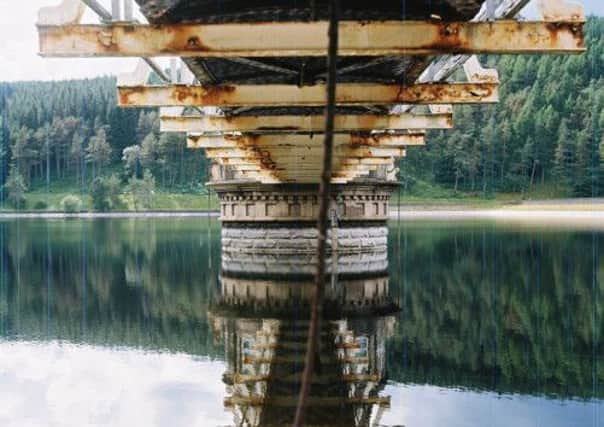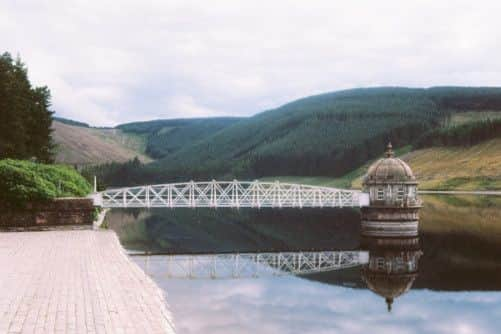Edinburgh’s water explored in art-science project


Perman’s involuntary witticism was made in reference to his latest project ‘Water of Life’, a collaborative work with environmental writer and musician Rob St. John which explores ideas of naturalness in Edinburgh’s urban environment through the Capital’s waters.
The project uses music and visual art as a vehicle for exploring the city’s environmental past and present, unearthing new sights and old stories in the observation of everything from reservoirs to culverts.
Advertisement
Hide AdThe artists received funding for their collaboration from Creative Scotland as part of Imagining Natural Scotland, a project to designed explore the interplay between the natural world and its representation, subsequently encouraging an artistic alliance between Scotland’s creative and scientific sectors.


Given St. John’s background in environmental science and Perman’s skill as an artist, the brief appealed to the duo’s combined expertises, providing them with scope to portray Edinburgh’s natural environment in an informative yet imaginative way.
“We’ve worked together a few times before on different art and music”, Perman explains.
“Although Rob’s wearing the scientist hat in this collaboration, he’s also a very talented musician and writer, so I always see him as an artist as well. But for the purposes of the funding and the purposes of this project, he’s a scientist.”
Collaboration


Though the roles of scientist and artist are loosely upheld by the duo, the collaboration saw Perman and St John work on most aspects of the project together. Both men attended field visits, where recordings were made at sites as diverse as spring houses, manhole covers, and pub barrel rooms, and both have contributed to the musical side of the project, for as St. John explains, the interests that this project draws upon are mutual.
“I come from a environmental background, working as a writer with an interest in art. Tommy is a fantastic artist, with an interest in finding new ways of seeing and understanding the places where we live. So, to an extent, our interests met in the middle”, he says.
Advertisement
Hide Ad““We’re both interested in how art can add new perspectives on and framing of the environment around us.
“The Imagining Natural Scotland fund has given us the time and space to explore these ideas.
Advertisement
Hide Ad“‘Natural’ Scotland isn’t only (or perhaps, at all) the Balmoralised, empty Highlands. The idea of what is ‘natural’ is perhaps more exciting and productive in the city, as self-willed life springs through the gaps, challenging how we think about the state of the environments around us.”
Music
The pair first met through the Edinburgh music scene, with Perman working as part of Found, a band and arts collective, and St. John playing in numerous bands. Though the project uses a lot of music to express the ideas, it was not in the original idea for the collaboration.
“It was fun gathering all the stuff, and we hadn’t planned on making music for it”, he says.
“At the beginning we thought it might just be a set of field recordings. We were waiting to see what we managed to find. Once Rob uncovered all these cool stories, the music came together easily as a response to the character of the different locations we went to see. It seemed like they suggested musical themes.”
New discoveries
But it is not only the musical themes that Rob’s unearthed stories have inspired. Largely forgotten areas of Edinburgh’s history, away from the well known vestiges and vaults, the cities waters tell tales of days gone by.
“That was one of the amazing things for both of us”, says Perman, “Rob having lived in Edinburgh for a decade, and me for the best part of 33 years.
Advertisement
Hide Ad“It’s the fact that we’re discovering stuff we never knew about. You can still make these amazing new discoveries in a city you thought you knew so well.
“Probably the most incredible for me was this Comiston Springs waterhouse up in Oxgangs. It was this 300 year old building, really non descript. I had no idea of its existence - and it was incredibly important for the development of Edinburgh.
Advertisement
Hide Ad“This is a 300 year old building which has these natural springs running into it. There was seven natural springs up there, all running into this building, and then that water would flow down to a reservoir at the top of the High Street. It went from there to different parts of town. It’s an incredibly important building that nobody really knows about anymore, and now it’s on the buildings at risk register. It’s totally falling into a state of disrepair and there’s no real plans to do anything with it.”
Outside of the building, there are other intriguing byproducts of Edinburgh’s historic water system springing up around the city.
“There’s a number of well heads scattered around Oxgangs”, Perman explains.
“Some of them are on the edge of streets, some of them are semi submerged, and some of them are in peoples back gardens. These well heads again are hundreds of years old – and there are no plaques up about them. They were just where natural springs came to surface.
According to the artist, the names of the well heads are remembered in the area, with the likes of Fox Spring Rise and Swan Spring Avenue tipping the hat to the Capital’s water system.
Seafield
Though unique stories of historical interest have been unearthed, the pair have also shed new light on features of Edinburgh still in use today.
Advertisement
Hide Ad“Before we started this project I was fascinated with Seafield sewage works”, Perman says.
“I’m really interested in industrial spaces, and visually it’s totally unlike anything in Edinburgh.
Advertisement
Hide Ad“Seafield always struck me as a really odd spot. I’ve spent a lot of my life drawing buildings in Edinburgh, and when this project came up I wanted to stretch myself and do things that aren’t commonly associated with Edinburgh. There are things that you would instantly think of when you’re talking about the city, there’s the old town and different icons, and I wanted to think about what else is here and visually its just so different.”
As for the future, Perman believes the project could expand.
“I would love to carry on developing the project, potentially into a book or something. There are so many great stories and that’s what struck me as a method of communicating maybe some scientific ideas and historical facts.
For the moment though, those eager to examine the flow of water through Auld Reekie can do so on the 9th December, with the release of a 7” inch single.
• More details on the Water of Life project and Imagining Natural Scotland can be found here